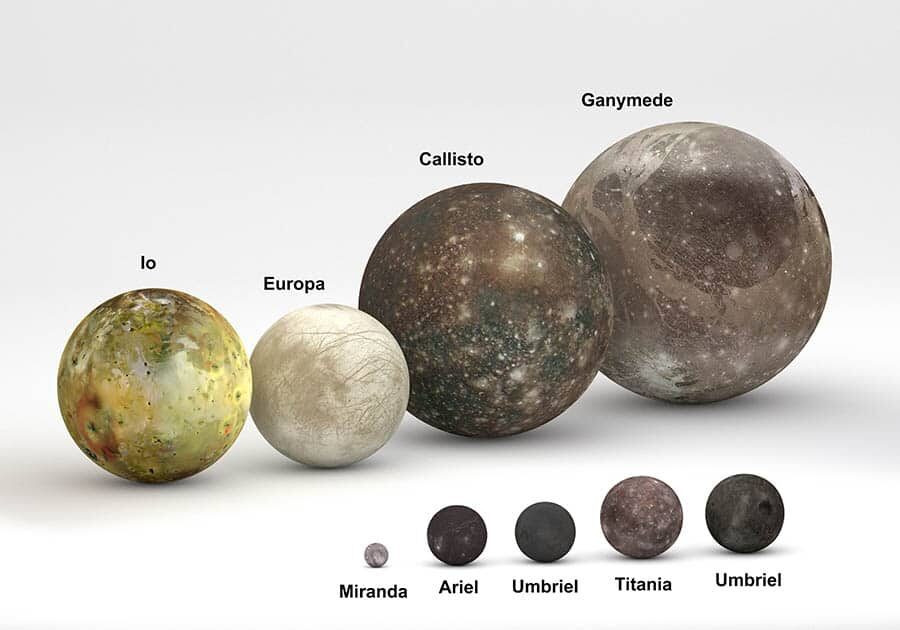10 Miranda Moon Facts | Interesting Facts about Miranda
Miranda is known as one of the smallest moons that orbits the planet Uranus. We know little about this moon, and its core is still deliberated by astronomers – we do know that it has quite a low mass however. Miranda orbits close to the planet too, and it’s one of the five major moons that make up the Uranian system. Let’s have a look at some facts about Miranda.
- Miranda has an estimated radius of 146.5 miles (235.8km).
- In comparison to the Earth’s moon, it only measures up at around 14% of it’s size.
- Miranda orbits Uranus at a distance of more than 80716 miles (129,900 kilometers).
- It takes Miranda around 36 hours to complete one full orbit of Uranus.
- Miranda takes it’s name from one of the main characters in The Tempest, a play by William Shakespeare.
- Miranda was discovered back in 1948 by Gerard Kuiper – this is the same man that the Kuiper belt is named after!
- Miranda has a relatively young surface in comparison to other moon, with a large number of craters that are relatively small.
- Miranda has a very low temperature, with a general average of -185°c.
- Due to Miranda’s small size, it is unlikely that it has an atmosphere or magnetic field.
- Miranda has the largest cliff in our solar system, with a height of more than 12 miles.
 This image shows just how small Miranda is compared to Uranus’s other moons, as well as Jupiter’s massive moons!
This image shows just how small Miranda is compared to Uranus’s other moons, as well as Jupiter’s massive moons!
The moon Miranda takes it’s name from a character named Miranda in a Shakespeare play, The Tempest. Miranda is a significant character in this play, primarily because she’s the only female to actually get any stage time. She is the banished daughter of the main character Prospero. Many of the other moons have taken their name from Shakespeare characters too.
Astronomers are still not sure what the moon Miranda is made of. It is thought that it is likely made up of a substantial amount of water ice in the inside of this moon. We know this because the planet has a very low density, unlike other moons which may have a large iron core in their center. It is also likely that Miranda has a lot of silicate rock in it’s core and mantle.
As previously mentioned, Miranda takes around 36 hours to complete one full orbit of the planet Uranus. If we compare it to the other round satellites that orbit Uranus, it is the closest in proximity, as it’s orbits the planet less than 100,000 miles away. Miranda orbits Uranus at a very high inclination, much more than any of the other moons that orbit it.
The surface of Miranda is made up of many small craters, valleys and huge canyons. Miranda is well known for having the biggest cliff in our solar system, which is named Verona Rupes. This cliff has a height of more than 12 miles (20km). Although much of the surface is old and cratered, there are also areas which are quite young and less than 50 million years old. On the surface, there is likely to be a lot of water ice as well. Due to its size, there isn’t an atmosphere.
Due to it’s magnitude and small size, it’s going to be pretty difficult to see Miranda even if you’re using an amateur telescope. However, when the spacecraft Voyager 2 passed Uranus it found Miranda to be very visible.
All in all, Miranda is one of the smaller moons that orbits the planet Uranus. It has the largest known cliff in our solar system, and it has a mixture of both old craters surface and well as a younger surface too. Hopefully you’ve learned a little more about the moon Miranda!